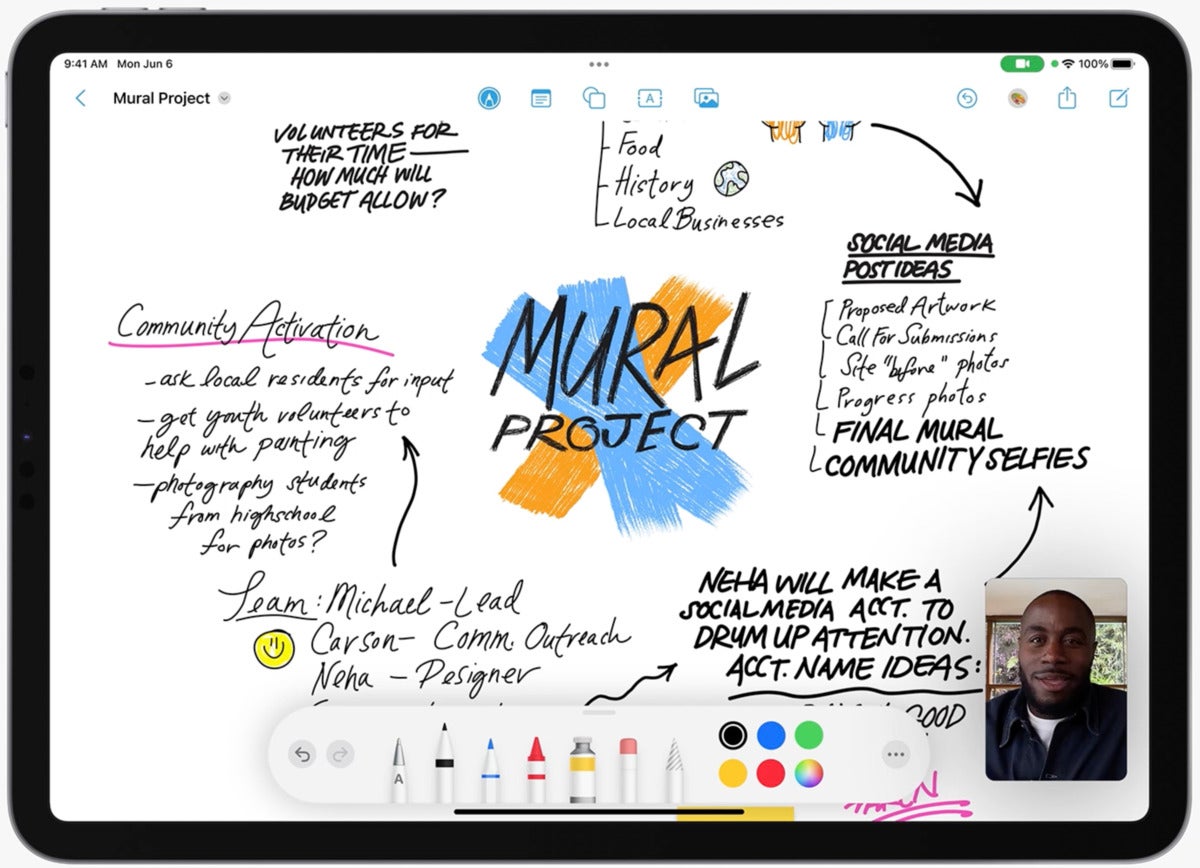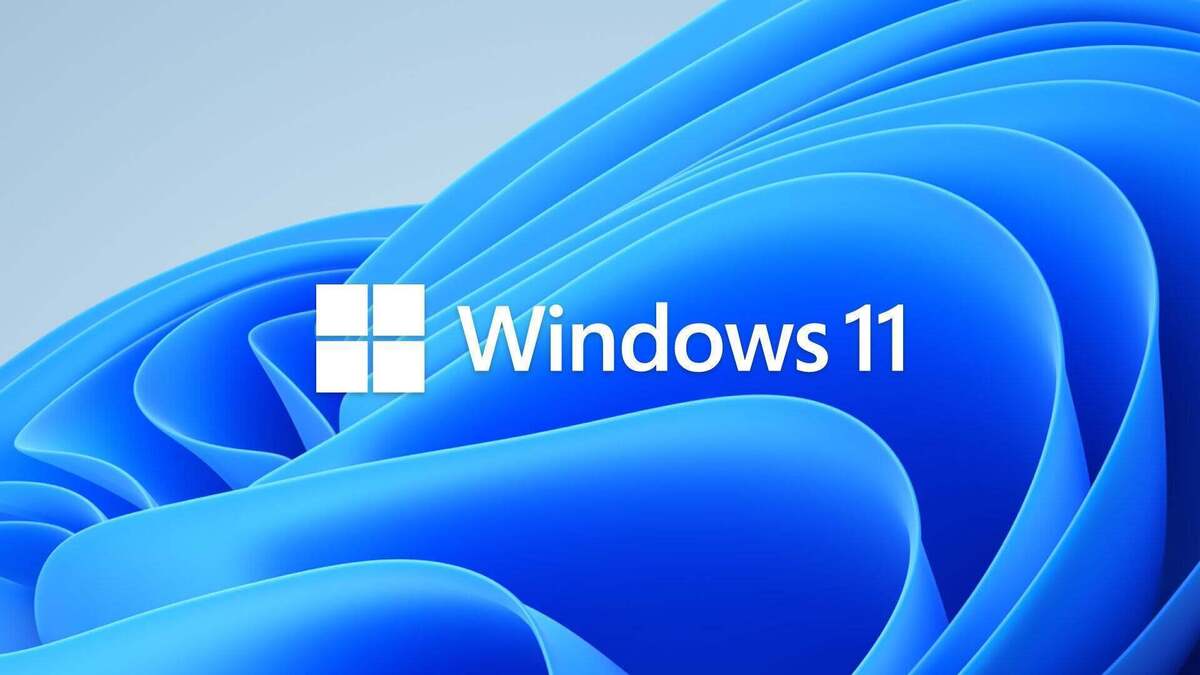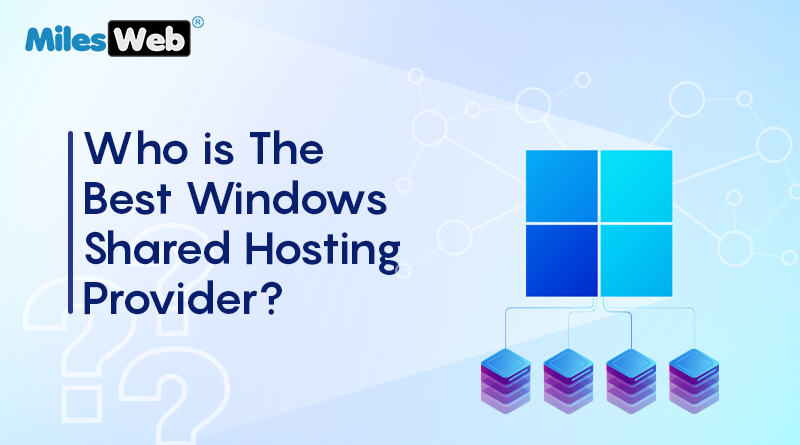Microsoft never sleeps. In addition to its steady releases of major and minor updates to the current version of Windows 10, the company frequently rolls out public preview builds to members of its Windows Insider Program, allowing them to test out — and even help shape — upcoming features.
Microsoft numbers Windows 10 releases using a YYH1/YYH2 format, with the YY standing for the last two numbers of the year and H1 or H2 referring to the first or second half of the year. So the most recent version of Windows 10 is officially referred to as Windows 10 version 21H1, or the May 2021 Update. The next feature update, due in the fall of 2021, will be version 21H2.
Windows Insiders can choose to receive preview builds in one of three channels. The Dev Channel is where new features are introduced for initial testing, regardless of which Windows release they’ll eventually end up in. The Beta Channel lets you test more polished features that will be deployed in the next major Windows release. Insiders in the Dev and Beta Channels are now testing Windows 11 builds (see “Windows 11 Insider Previews: What’s in the latest build?”).
The Release Preview Channel typically doesn’t see action until shortly before a new feature update is rolled out; it’s meant for final testing of an upcoming release and is best for those who want the most stable builds. This is the only Insider channel that is currently receiving Windows 10 builds. If you were in the Dev or Beta Channel but your PC doesn’t meet Windows 11 requirements, you have been moved to the Release Preview Channel for Windows 10 builds.
Use the links below to find information about recent Windows 10 preview builds:
For each build, we’ve included the date of its release, which Insider channel it was released to, a summary of what’s in the build, and a link to Microsoft’s announcement about it. After that you’ll find summaries of the preview builds that led up to earlier Windows 10 feature updates.
Note: If you’re looking for information about updates being rolled out to all Windows 10 users, not previews for Windows Insiders, see “Windows 10: A guide to the updates.”
Releases for Windows 10 version 21H2
Windows 10 Build 19044.1741 (21H2)
Release date: June 2, 2022
Released to: Release Preview Channel
The build fixes one bug, which prevented the file system control code (FSCTL_SET_INTEGRITY_INFORMATION_EX) from handling its input parameter correctly.
(Get more info about Windows 10 Build 19044.1741.)
Windows 10 Build 19044.1739 (21H2)
Release date: May 23, 2022
Released to: Release Preview Channel
The build fixes a wide variety of bugs, including one that failed to display the Application Counters section in the performance reports of the Performance Monitor tool, a memory leak issue that affected Windows systems that are in use 24 hours each day of the week, and one that caused file copying to be slower.
(Get more info about Windows 10 Build 19044.1739.)
Windows 10 Build 19044.1679 (21H2)
Release date: April 14, 2022
Released to: Release Preview Channel
The build adds improvements for servicing the Secure Boot component of Windows and fixes a wide variety of bugs, including one that caused a remote desktop session to close or a reconnection to stop responding while waiting on the accessibility shortcut handler (sethc.exe); another that caused the news and interest panel to appear when you haven’t clicked, tapped, or moused over it; and another that caused Windows to stop working when you applied a Windows Defender Application Control (WDAC) policy that doesn’t require a restart.
(Get more info about Windows 10 Build 19044.1679.)
Windows 10 Build 19044.1618 (21H2)
Release date: March 14, 2022
Released to: Release Preview Channel
This build introduces search highlights, which display notable moments about each day, including holidays, anniversaries, and other events globally and in your region. To see more details at a glance, hover or click on the illustration in the search box.
There are also a variety of small new features, including a new policy that expands an app’s top three notifications by default in the Action Center for apps that send notifications using Windows notifications. It displays multiple notifications that you can interact with simultaneously.
In addition, there are a wide variety of bug fixes, including for one that stopped Microsoft Outlook’s offline search from returning recent emails, and another that prevented the User Account Control (UAC) dialog from correctly showing the application that is requesting elevated privileges
(Get more info about Windows 10 Build 19044.1618.)
Windows 10 Insider Preview Build 19044.1499 (21H2)
Release date: January 14, 2022
Released to: Release Preview Channel
This build fixes a wide variety of bugs, including one that prevented the Windows Subsystem for Linux 2 (WSL2) localhost relay from starting when Fast Startup is enabled, another that prevented certain surround sound audio from playing in Microsoft Edge, and another in Microsoft UI Automation that could cause Microsoft Outlook to stop working.
(Get more info about Windows 10 Insider Preview Build 19044.1499.)
Windows 10 Build 19044.1381 (21H2)
Release date: November 18, 2021
Released to: Release Preview Channel
This build includes all the changes in Windows 10 Build 19044.1379 (21H2) and also fixes an additional bug that affected devices that use Windows Hello for Business and are joined to Azure Active Directory (AD). These devices had issues when they accessed on-premises resources, such as file shares or websites.
(Get more info about Windows 10 Build 19044.1381.)
Windows 10 Build 19044.1379 (21H2)
Release date: November 16, 2021
Released to: Release Preview Channel
This build fixes a wide variety of bugs, including one that failed to apply machine Group Policy objects automatically at startup or in the background to devices on a domain that have certain processors, and another that incorrectly renders some variable fonts.
(Get more info about Windows 10 Build 19044.1379.)
Windows 10 Insider Preview Build 19044.1320 (21H2)
Release date: October 26, 2021
Released to: Release Preview Channel
This build includes all the features from Build 19044.1319 and also fixes a bug that prevented the successful installation of printers using the Internet Printing Protocol (IPP).
(Get more info about Windows 10 Insider Preview Build 19044.1320.)
Windows 10 Insider Preview Build 19044.1288 (21H2)
Release date: October 21, 2021
Released to: Release Preview Channel and via ISO
Microsoft says that it believes “Build 19044.1288 is the final build for the November 2021 Update.” Insiders in the Release Preview Channel can go to Settings > Update & Security > Windows Update and choose to download and install Windows 10, version 21H2. It can also be downloaded via ISO. Microsoft didn’t announce any new features or bug fixes in this build.
(Get more info about Windows 10 Insider Preview Build 19044.1288.)
Windows 10 Insider Preview Build 19044.1319 (21H2)
Release date: October 19, 2021
Released to: Release Preview Channel
This build fixes a wide variety of bugs, including one that prevented subtitles from displaying for certain video apps and streaming video sites, and another in which the use of App-V intermittently caused black screens to appear when signing in on the credentials page.
(Get more info about Windows 10 Insider Preview Build 19044.1319.)
Windows 10 Insider Preview Build 19044.1263 (21H2)
Release date: September 23, 2021
Released to: Release Preview Channel
This build fixes several dozen bugs, including one that caused News and Interests to appear in the context menu even when you have disabled it on a device, and another that caused distortion in the audio that Cortana and other voice assistants capture.
(Get more info about Windows 10 Insider Preview Build 19044.1263.)
Windows 10 Insider Preview Build 19044.1202 (21H2)
Release date: August 31, 2021
Released to: Release Preview Channel
This build fixes a bug that caused the Windows Update settings page to stop responding after you download an optional update.
(Get more info about Windows 10 Insider Preview Build 19044.1202.)
Windows 10 Insider Preview Build 19044.1200 (21H2)
Release date: August 18, 2021
Released to: Release Preview Channel (only for Insiders who were moved from the Beta Channel to the Release Preview Channel because their PC did not meet the hardware requirements for Windows 11)
Note: This build is only available for those who seek it out by going to Settings > Update & Security > Windows Update and choosing to download and install 21H2.
This build adds WPA3 H2E standards support for enhanced Wi-Fi security, and a new deployment method, cloud trust, which supports simplified passwordless deployments for a deploy-to-run state within a few minutes.
It includes a wide variety of bug fixes, including for one that caused an external monitor to display a black screen after hibernation and another in Windows Defender Exploit Protection that prevented some Microsoft Office applications from working on machines that have certain processors.
(Get more info about Windows 10 Insider Preview Build 19044.1200.)
Windows 10 Insider Preview Build 19044.1147 (21H2)
Release date: July 15, 2021
Released to: Release Preview Channel (only for Insiders who were moved from the Beta Channel to the Release Preview Channel because their PC did not meet the hardware requirements for Windows 11)
Note: This build is only available for those who seek it out by going to Settings > Update & Security > Windows Update and choosing to download and install 21H2.
This build focuses almost solely on a wide variety of bug fixes, including for a bug that caused File Explorer to stop working after reaching 99% completion when deleting many files on a mapped network drive, and another that caused System Integrity to leak memory.
(Get more info about Windows 10 Insider Preview Build 19044.1147.)
Releases for Windows 10 version 21H1
Windows 10 Build 19043.1381 (21H1)
Release date: November 18, 2021
Released to: Release Preview Channel
This build includes all the changes in Windows 10 Build 19043.1379 (21H1) and also fixes an additional bug that affected devices that use Windows Hello for Business and are joined to Azure Active Directory (AD). These devices had issues when they accessed on-premises resources, such as file shares or websites.
(Get more info about Windows 10 Build 19043.1381.)
Windows 10 Build 19043.1379 (21H1)
Release date: November 16, 2021
Released to: Release Preview Channel
This build fixes a wide variety of bugs, including one that failed to apply machine Group Policy objects automatically at startup or in the background to devices on a domain that have certain processors, and another that incorrectly renders some variable fonts.
(Get more info about Windows 10 Build 19043.1379.)
Windows 10 Insider Preview Build 19044.1320 (21H1)
Release date: October 26, 2021
Released to: Release Preview Channel
This build includes all the features from Build 19043.1319 and also fixes a bug that prevented the successful installation of printers using the Internet Printing Protocol (IPP).
(Get more info about Windows 10 Insider Preview Build 19043.1320.)
Windows 10 Insider Preview Build 19043.1319 (21H1)
Release date: October 19, 2021
Released to: Release Preview Channel
This build fixes a wide variety of bugs, including one that prevented subtitles from displaying for certain video apps and streaming video sites, and another in which the use of App-V intermittently caused black screens to appear when signing in on the credentials page.
(Get more info about Windows 10 Insider Preview Build 19043.1319.)
Windows 10 Insider Preview Build 19043.1263 (21H1)
Release date: September 23, 2021
Released to: Release Preview Channel
This build fixes several dozen bugs, including one that caused News and Interests to appear in the context menu even when you have disabled it on a device, and another that caused distortion in the audio that Cortana and other voice assistants capture.
(Get more info about Windows 10 Insider Preview Build 19043.1263.)
Windows 10 Insider Preview Build 19043.1202 (21H1)
Release date: August 31, 2021
Released to: Release Preview Channel
This build fixes a bug that caused the Windows Update settings page to stop responding after you download an optional update.
(Get more info about Windows 10 Insider Preview Build 19043.1202.)
Windows 10 Insider Preview Build 19043.1200 (21H1)
Release date: August 18, 2021
Released to: Release Preview Channel
This build includes a wide variety of bug fixes, including for one that caused an external monitor to display a black screen after hibernation and another in Windows Defender Exploit Protection that prevented some Microsoft Office applications from working on machines that have certain processors.
(Get more info about Windows 10 Insider Preview Build 19043.1200.)
Windows 10 Build 19043.1147 (21H1)
Release date: July 15, 2021
Released to: Release Preview Channel
Note: Windows Insiders in the Beta Channel on 21H1 will not receive this update. Microsoft says they will soon receive Windows 11 Insider Preview builds.
This build focuses almost solely on a wide variety of bug fixes, including for a bug that caused File Explorer to stop working after reaching 99% completion when deleting many files on a mapped network drive, and another that caused System Integrity to leak memory.
(Get more info about Windows 10 Build 19043.1147.)
Windows Feature Experience Pack 120.2212.3740.0
Release date: June 22, 2021
Released to: Beta and Release Preview Channels
This build has a single change: It fixed a bug that didn’t allow the touch keyboard to be displayed when invoked.
Microsoft is releasing only very minor changes to its Windows Feature Experience Packs for now, because it’s testing the process of distributing them. Over time, more features will be released more frequently. Eventually the packs will be delivered via Windows update the way all other updates are delivered.
(Get more info about Windows Feature Experience Pack 120.2212.3740.0.)
Windows 10 Build 19043.1081 (21H1)
Release date: June 17, 2021
Released to: Beta and Release Preview Channels
This build offers a wide variety of bug fixes, including for one that caused blurry text on the news and interests button on the Windows taskbar for some display configurations, and another in which signing into Windows using a PIN failed.
(Get more info about Build 19043.1081.)
Windows 10 Build 19043.1052 (21H1)
Release date: June 8, 2021
Released to: Beta and Release Preview Channels
This build includes a variety of security updates for the Microsoft Scripting Engine, Windows App Platform and Frameworks, Windows Input and Composition, Windows Management, Windows Cloud Infrastructure, Windows Authentication, Windows Fundamentals, Windows Virtualization, Windows Kernel, Windows HTML Platform and Windows Storage and Filesystems.
For more details, see Microsoft’s Security Update Guide.
What IT needs to know: Because this is a security update, it should be applied relatively soon. Over the next few weeks, check for reports about problematic issues, and if all seems well, apply the update.
(Get more info about 21H1 Build 19043.1052.)
Windows 10 Build 19043.1023 (21H1)
Release date: May 21, 2021
Released to: Beta Channel and Release Preview Channel
This build includes a wide variety of small bug fixes, including one that displayed items on the desktop after they have been deleted from the desktop, and another that caused configuration problems with devices configured using mobile device management (MDM) RestrictedGroups, LocalUsersAndGroups, or UserRights policies.
(Get more info about 21H1 Build 19043.1023.)
Windows 10 Insider Preview Build 19043.985 (21H1)
Release date: May 11, 2021
Released to: Beta and Release Preview Channels
This build includes a variety of security updates for Windows App Platform and Frameworks, the Windows Kernel, Windows Media, the Microsoft Scripting Engine, and the Windows Silicon Platform. For more details, see Microsoft’s Security Update Guide.
What IT needs to know: Because this is a security update, it should be applied relatively soon. Over the next few weeks, check for reports about problematic issues, and if all seems well, apply the update.
(Get more info about Insider Preview Build 19043.985.)
Windows Feature Experience Pack 120.2212.3740.0
Release date: April 28, 2021
Released to: Beta and Release Preview Channels
This build has a single change: It removes nonfunctional hyperlinks from being displayed in the Input Method Editor (IME) candidate window.
Microsoft is releasing only very minor changes to its Windows Feature Experience Packs for now, because it’s testing the process of distributing them. Over time, more features will be released more frequently. Eventually the packs will be delivered via Windows update the way all other updates are delivered.
(Get more info about Windows Feature Experience Pack 120.2212.3740.0.)
Windows 10 Insider Preview Build 19043.962 (21H1)
Release date: April 19, 2021
Released to: Beta and Release Preview Channels
This build offers new personalization options for news and interests on the taskbar. A new button links to a page that lets you choose specific topics that you’re interested in. You can search for topics or publishers you want to follow, and also browse through more than a dozen categories, including different types of news, entertainment, and sports.
There are also a wide variety of bug fixes, including for one that caused blank tiles to appear on the Start menu with names such as “ms-resource:AppName” or “ms-resource:appDisplayName,” and another that caused Azure Active Directory authentication to fail after signing in on Windows Virtual Desktop machines.
(Get more info about Insider Preview Build 19043.962.)
Windows 10 Insider Preview Build 19043.928 (21H1)
Release date: April 13, 2021
Released to: Beta and Release Preview Channels
This build includes a variety of security updates for Windows App Platform and Frameworks, Windows Apps, Windows Input and Composition, Windows Office Media, Windows Fundamentals, Windows Cryptography, the Windows AI Platform, Windows Kernel, Windows Virtualization, Internet Explorer, and Windows Media. For more details, see Microsoft’s Security Update Guide website.
There are several security updates in addition to those, including fixing a potential elevation of privilege vulnerability in the way Azure Active Directory web sign-in allows arbitrary browsing from the third-party endpoints used for federated authentication.
What IT needs to know: Because this is a security update, it should be applied relatively soon. Over the next few weeks, check for reports about problematic issues, and if all seems well, apply the update.
(Get more info about Insider Preview Build 19043.928.)
Windows 10 Insider Preview Build 19043.899 (21H1)
Release date: March 15, 2021
Released to: Beta Channel
This update fixes a wide variety of bugs, including one that caused Remote Desktop sessions to end unexpectedly, another that caused systems to stop working when no Trusted Platform Module (TPM) was present, and another that froze devices if files or folders that OneDrive syncs were deleted.
(Get more info about Insider Preview Build 19043.899.)
Windows 10 Insider Preview Build 19043.867 (21H1)
Release date: March 9, 2021
Released to: Beta Channel
This update includes a wide variety of security updates for the Windows Shell, Windows Fundamentals, Windows Management, Windows Apps, Windows User Account Control (UAC), Windows Virtualization, the Windows Kernel, the Microsoft Graphics Component, Internet Explorer, Microsoft Edge Legacy, and Windows Media. For details, see the Microsoft Security Update Guide.
What IT needs to know: Because this is a security update, it should be applied relatively soon. Over the next few weeks, check for reports about problematic issues, and if all seems well, apply the update.
(Get more info about Insider Preview Build 19043.867.)
Windows Feature Experience Pack 120.2212.3030.0
Release date: February 23, 2021
Released to: Beta Channel
This build has a single change: It improves the reliability of the handwriting input panel.
Windows Feature Experience Pack updates are delivered to Insiders in the Beta Channel via Windows Update just like builds and cumulative updates. If you want to install one, go to Settings > Update & Security > Windows Update and check for updates. You’ll have to reboot to enable it. To check your Windows Feature Experience Pack version, go to Settings > System > About.
(Get more info about Windows Feature Experience Pack 120.2212.3030.0.)
Windows 10 Insider Preview Build 19043.844 (21H1)
Release date: February 17, 2021
Released to: Beta Channel
This build is the first version of the next Windows 10 feature update, version 21H1. In order to get it, Insiders in the Beta Channel need to go to Settings > Update & Security > Windows Update and choose to download and install 21H1. Once you’ve installed 21H1, you’ll receive preview builds for 21H1 moving forward; those who don’t install it will continue to receive 20H2 builds for the time being.
The build includes all the fixes in Insider Build 19042.844 for version 20H2 as well as several minor bug fixes and tweaks. Bug fixes include resolving an issue that caused a one-minute or more delay when you opened a Microsoft Defender Application Guard (WDAG) Office document. Feature tweaks include having Windows Hello multicamera support set the default as the external camera when both external and internal Windows Hello cameras are present.
For more details about 21H1, see this blog post from John Cable, Vice President, Program Management, Windows Servicing and Delivery.
(Get more info about Insider Preview Build 19043.844.)
Releases for Windows 10 version 20H2
Windows Feature Experience Pack 120.2212.3740.0
Release date: June 22, 2021
Released to: Beta and Release Preview Channels
This build has a single change: It fixed a bug that didn’t allow the touch keyboard to be displayed when invoked.
Microsoft is releasing only very minor changes to its Windows Feature Experience Packs for now, because it’s testing the process of distributing them. Over time, more features will be released more frequently. Eventually the packs will be delivered via Windows update the way all other updates are delivered.
(Get more info about Windows Feature Experience Pack 120.2212.3740.0.)
Windows 10 Build 19042.1081 (20H2)
Release date: June 17, 2021
Released to: Release Preview Channel
This build offers a wide variety of bug fixes, including for one that caused blurry text on the news and interests button on the Windows taskbar for some display configurations, and another in which signing into Windows using a PIN failed.
(Get more info about Build 19042.1081.)
Windows 10 Insider Preview Build (20H2) Build 19042.1023
Release date: May 21, 2021
Released to: Release Preview Channel
This build, for Insiders on 20H2, includes a wide variety of small bug fixes, including one that displayed items on the desktop after they have been deleted from the desktop, and another that caused configuration problems with devices that were configured using mobile device management (MDM) RestrictedGroups, LocalUsersAndGroups, or UserRights policies.
(Get more info about (20H2) Build 19043.1023 (KB5003214).
Windows 10 Insider Preview Build 19042.962 (20H2)
Release date: April 19, 2021
Released to: Release Preview Channel
This build offers new personalization options for news and interests on the taskbar. A new button links to a page that lets you choose specific topics that you’re interested in. You can search for topics or publishers you want to follow, and also browse through more than a dozen categories, including different types of news, entertainment, and sports.
There are also a wide variety of bug fixes, including for one that caused blank tiles to appear on the Start menu with names such as “ms-resource:AppName” or “ms-resource:appDisplayName,” and another that caused Azure Active Directory authentication to fail after signing in on Windows Virtual Desktop machines.
(Get more info about Insider Preview Build 19042.962.)
Windows Feature Experience Pack 120.2212.3030.0
Release date: February 23, 2021
Released to: Beta Channel
This build has a single change: It improves the reliability of the handwriting input panel.
Windows Feature Experience Pack updates are delivered to Insiders in the Beta Channel via Windows Update just like builds and cumulative updates. If you want to install one, go to Settings > Update & Security > Windows Update and check for updates. You’ll have to reboot to enable it. To check your Windows Feature Experience Pack version, go to Settings > System > About.
(Get more info about Windows Feature Experience Pack 120.2212.3030.0.)
Windows 10 Insider Preview Build 19042.844 (20H2)
Release date: February 17, 2021
Released to: Release Preview and Beta Channels
This update fixes a wide variety of bugs, including one that caused video playback to flicker when rendering on certain low-latency capable monitors, and another that prevented certain Win32 apps from opening as a different user when you use the runas command.
There are also a few minor feature tweaks, including enabling Windows to retrieve updated printer capabilities to ensure that users have the proper set of selectable print options.
(Get more info about Insider Preview Build 19042.844.)
Windows 10 Insider Preview Build 19042.804 (20H2)
Release date: February 9, 2021
Released to: Release Preview and Beta Channels
This release fixes a bug and includes a variety of security updates. The bug fixed could damage the file system of some devices and prevent them from starting up after running chkdsk /f.
Security updates are provided for Windows App Platform and Frameworks, Windows Apps, Windows Input and Composition, Windows Cloud Infrastructure, Windows Management, Windows Authentication, Windows Fundamentals, Windows Cryptography, Windows Virtualization, Windows Core Networking, and Windows Hybrid Cloud Networking. For details, see the Microsoft Security Update Guide.
What IT needs to know: Because this is a security update, it should be applied relatively soon. Over the next few weeks, check for reports about problematic issues, and if all seems well, apply the update.
(Get more info about Insider Preview Build 19042.804.)
Windows 10 Insider Preview Build 19042.789 (20H2)
Release date: February 2, 2021
Released to: Release Preview and Beta Channels
This update includes all the fixes in Windows 10 Insider Preview Build 19042.782 (20H2), plus three additional ones:
- One fixes an issue with Microsoft Exchange accounts and some Surface Hub devices that occurred after updating to Windows 10 version 20H2. The message “Something went wrong” appeared, with error code 0x80131500.
- Another fixes an issue with Windows Update scans that occurred when an authenticated proxy was used as a fallback for the sync service after the previous proxy setting fails.
- The third fixes an issue that caused an update from Windows 10, version 1703 to Windows 10, version 20H2 to fail on a Surface Hub device. The message “Getting ready…” remained on the screen indefinitely.
(Get more info about Insider Preview Build 19042.789.)
Windows Feature Experience Pack 120.2212.2020.0
Release date: January 26, 2021
Released to: Beta Channel
Microsoft says this build improves the reliability of screen snipping, particularly for apps that often access the clipboard. It also removes the ability to copy and paste a screen snip directly into a folder in File Explorer. That feature was removed because of a bug. Microsoft plans to turn the feature back on in a future update.
Windows Feature Experience Pack updates are delivered to Insiders via Windows Update just like builds and cumulative updates. If you want to install one, go to Settings > Update & Security > Windows Update and check for updates. Note that Insiders in the Beta Channel will need to have 20H2 Build 19042.662 or higher installed if they want to get it. You’ll have to reboot to enable it. To check your Windows Feature Experience Pack version, go to Settings > System > About.
This Experience Pack build contains barely any new features because Microsoft is still testing out the process of delivering new features outside of major Windows 10 feature updates. Microsoft expects to expand the scope and the frequency of releases in the future. Eventually, Windows Feature Experience Pack updates will be folded into the existing servicing process for Windows 10 and delivered through Windows Update.
(Get more info about Windows Feature Experience Pack 120.2212.2020.0.)
Windows 10 Insider Preview Build 19042.782 (20H2)
Release date: January 21, 2021
Released to: Release Preview and Beta Channels
This update includes fixes for a wide variety of bugs, including one that prevented you from opening a document on the Windows desktop and generates the error “The directory name is invalid,” another that sometimes caused Alt-Tab to switch to the wrong window, and another that caused the upload of diagnostic logs to a management service, such as Microsoft Intune, to fail.
It also includes a few minor new features, including one that allows administrators to disable standalone Internet Explorer using a Group Policy while continuing to use Microsoft Edge’s IE Mode, and another that lets you configure certain policies that support Microsoft Edge IE Mode using mobile device management (MDM).
(Get more info about Insider Preview Build 19042.782.)
Windows 10 Build 19042.746 (20H2)
Release date: January 12, 2021
Released to: Beta and Release Preview Channels
This build fixes a variety of security vulnerabilities, including one with HTTPS-based intranet servers, and a security bypass vulnerability in the way the Printer Remote Procedure Call (RPC) binding handles authentication for the remote Winspool interface.
There are also security updates to Windows App Platform and Frameworks, Windows Media, Windows Fundamentals, Windows Kernel, Windows Cryptography, Windows Virtualization, Windows Peripherals, and Windows Hybrid Storage Services. For details, see the Microsoft Security Update Guide.
There are two known issues in this update, including one in which system and user certificates might be lost when updating a device from Windows 10 version 1809.
What IT needs to know: Because this is a security update, it should be applied relatively soon. Over the next few weeks, check for reports about problematic issues, and if all seems well, apply the update.
(Get more info about Build 19042.746.)
Windows 10 Insider Preview Build 19042.685 (20H2)
Release date: December 8, 2020
Released to: Release Preview and Beta Channels
This build fixes a security vulnerability by preventing applications that run as a SYSTEM account from printing to “FILE:” ports. It also has security updates for the legacy version of Microsoft Edge, the Microsoft Graphics Component, Windows Media, Windows Fundamentals, and Windows Virtualization. For details, see the Microsoft Security Update Guide.
What IT needs to know: Because this is a security update, it should be applied relatively soon. Over the next few weeks, check for reports about problematic issues, and if all seems well, apply the update.
(Get more info about Insider Preview Build 19042.685.)
Windows 10 Feature Experience Pack 120.2212.1070.0
Release date: November 30, 2020
Released to: Beta Channel
This is the first build of a Microsoft Experience Pack, which offers a set of new features to Windows users outside the normal twice-yearly Windows 10 feature updates. This first early build was done more to test the process of releasing experience packs than to add any significant new features. Microsoft notes, “By testing this process first with Windows Insiders, we hope to expand the scope and the frequency of releases in the future.”
There are only two, minor new features in the build:
- You can now use Windows 10’s built-in screen snipping tool (press Windows key + Shift + S) to create a screenshot and save it in the folder you choose in File Explorer.
- Split keyboard mode is now supported when you use the touch keyboard in portrait orientation on a 2-in-1 touch device.
To receive this update, Insiders in the Beta Channel must have 20H2 Build 19042.662 installed. To get the update, they’ll have to go to Settings > Update & Security > Windows Update and check for updates. Once they’ve installed the update, they’ll have to reboot to turn on the new features. They can check their Windows Feature Experience Pack version by going to Settings > System > About.
(Get more info about Feature Experience Pack 120.2212.1070.0.)
Windows 10 Insider Preview Build 19042.662 (20H2)
Release date: November 23, 2020
Released to: Release Preview and Beta Channels
This build has a wide variety of minor bug fixes and updates, including fixing an issue that caused a system to stop working during startup when the CrashOnAuditFail policy is set to 1 and command-line argument auditing is turned on, and fixing another issue that caused the Microsoft Management Console (MMC) Group Policy application to stop working when you are editing the Group Policy Security settings.
(Get more info about Insider Preview Build 19042.662.)
Windows 10 Insider Preview Build 19042.630 (20H2)
Release date: November 10, 2020
Released to: Release Preview and Beta Channels
This build updates the 2020 DST start date for the Fiji Islands to December 20, 2020 and includes security updates to the Microsoft Scripting Engine, Windows Input and Composition, Microsoft Graphics Component, the Windows Wallet Service, Windows Fundamentals, and the Windows Kernel. For details see the release notes for November 2020 Security Updates.
What IT needs to know: Because this is a security update, it should be applied relatively soon. Over the next few weeks, check for reports about problematic issues, and if all seems well, apply the update.
(Get more info about Insider Preview Build 19042.630.)
Windows 10 Insider Preview Build 19042.610 (20H2)
Release date: October 29, 2020
Released to: Release Preview and Beta Channels
This update for insiders on the 20H2 Windows 10 October 2020 Update includes all the fixes in the 20H2 Build 19042.608 build, plus one minor additional fix. It fixes a bug that caused the Docker pull operation to fail due to a Code Integrity (CI) Policy that blocks the import of a Windows container image.
(Get more info about Insider Preview Build 19042.610.)
Windows 10 Insider Preview Build 19042.608 (20H2)
Release date: October 22, 2020
Released to: Release Preview and Beta Channels
This update makes it easier to connect to others in Skype, using Meet Now from the taskbar. In addition, there are a wide variety of bug fixes, including for a bug that displayed the incorrect CPU frequency for certain processors, and another that displayed nothing on the screen for five minutes or more during a Remote Desktop Protocol (RDP) session.
(Get more info about Insider Preview Build 19042.608.)
Windows 10 Insider Preview Build 19042.572 (20H2)
Release date: October 13, 2020
Released to: Beta and Release Preview Channels
This build for Insiders who are on version 20H2 (the October 2020 Update) fixes a few minor bugs and includes a variety of security updates. Among the items fixed are an issue with creating null ports using the user interface, and another issue with a possible elevation of privilege in win32k.
Security updates were issued for Windows App Platform and Frameworks, Microsoft Graphics Component, Windows Media, Windows Fundamentals, Windows Authentication, Windows Virtualization, and Windows Kernel. For details, see the Release Notes for October 2020 Security Updates.
What IT needs to know: Because this is a security update, it should be applied relatively soon. Over the next few weeks, check for reports about problematic issues, and if all seems well, apply the update.
(Get more info about Insider Preview Build 19042.572.)
Windows 10 Insider Preview Build 19042.546 (20H2)
Release date: September 30, 2020
Released to: Beta and Release Preview Channels
This build for Insiders who are on version 20H2 (the Windows 10 October 2020 Update) includes all of the fixes included as part of 20H2 Build 19042.541, plus two minor bug fixes, one that had prevented a device from entering Modern Standby, and the other a reliability issue in Microsoft Edge that occurs when you open multiple windows or tabs.
(Get more info about Insider Preview Build 19042.546.)
Windows 10 Insider Preview Build 19042.541 (20H2)
Release date: September 22, 2020
Released to: Beta and Release Preview Channels
This build for Insiders who are on Windows 10 20H2 (the October 2020 Update) fixes a wide variety of bugs, including one in which the Windows Subsystem for Linux (WSL) failed to start with an “Element not found” error, another that caused random line breaks when you redirected PowerShell console error output, and another that prevented Microsoft Intune from syncing on a device using the virtual private network version 2 (VPNv2) configuration service provider (CSP).
(Get more info about Insider Preview Build 19042.541.)
Windows 10 Insider Preview Build 19042.508 (20H2)
Release date: September 18, 2020
Released to: Release Preview Channel
Microsoft says this build, previously released to the Beta Channel on Sept. 8., will be the final build for the Windows 10 October 2020 Update, barring unforeseen consequences. To get it, Insiders in the Release Preview Channel need to go to Settings > Update & Security > Windows Update and choose to download and install 20H2.
(Get more info about Build 19042.508.)
Windows 10 Insider Preview Build 19042.508 (20H2)
Release date: September 8, 2020
Released to: Beta Channel
This build includes security updates for Windows App Platform and Frameworks, Microsoft Graphics Component, Windows Input and Composition, Windows Media, Windows Shell, Windows Cloud Infrastructure, Windows Fundamentals, Windows Management, Windows Kernel, Windows Virtualization, Windows Storage and Filesystems, the Microsoft Scripting Engine, and the Microsoft JET Database Engine.
For details, see the Release Notes for September 2020 Security Updates.
The build also fixes a security vulnerability issue with user proxies and HTTP-based intranet servers, and addresses an issue with a possible elevation of privileges in windowmanagement.dll.
What IT needs to know: Because this is a security update, it should be applied relatively soon. Over the next few weeks, check for reports about problematic issues, and if all seems well, apply the update.
Note: Microsoft is releasing 20H2 to commercial customers in the Beta Channel and Release Preview Channel for pre-release validation. Get details in this blog post.
(Get more info about Insider Preview Build 19042.508.)
Windows 10 Insider Preview Build 19042.487 (20H2)
Release date: August 26, 2020
Released to: Beta and Release Preview Channel (commercial customers)
The build fixes a wide variety of bugs, including one in which add-ins caused Microsoft Outlook to become unresponsive, another in which a black screen was displayed to Windows Virtual Desktop (WVD) users when they attempted to sign in, and another in which Dynamic Data Exchange (DDE) caused a memory leak when multiple clients connected to the same server.
Note: Microsoft is releasing this build to commercial customers in the Beta Channel and Release Preview Channel for pre-release validation. Get details in this blog post.
(Get more info about Insider Preview Build 19042.487.)
Windows 10 Insider Preview Build 19042.450 (20H2)
Release date: August 11, 2020
Released to: Beta Channel
This build includes security updates for the Microsoft Scripting Engine, Internet Explorer, Windows Graphics, Microsoft Graphics Component, Windows Kernel, Windows Input and Composition, Windows Media, Windows Shell, the Windows Wallet Service, Microsoft Edge Legacy, Windows Cloud Infrastructure, Windows Authentication, the Windows AI Platform, Windows Fundamentals, Windows Storage and Filesystems, Windows Update Stack, Windows File Server and Clustering, Windows Hybrid Storage Services, Windows App Platform and Frameworks, the Microsoft JET Database Engine, and Windows SQL components.
For details, see the Release Notes for August 2020 Security Updates.
The build also fixes an issue in Universal Windows Platform (UWP) apps that allows single sign-on authentication when an app does not have the Enterprise Authentication capability.
What IT needs to know: Because this is a security update, it should be applied relatively soon. Over the next few weeks, check for reports about problematic issues, and if all seems well, apply the update.
(Get more info about Insider Preview Build 19042.450.)
Windows 10 Insider Preview Build 19042.423 (20H2)
Release date: August 5, 2020
Released to: Beta Channel
This build is a re-release of 20H2 19042.421 (see below), released on July 24 to the Beta Channel. It was released in order to bring it to parity with the KB4568831 update for Windows 10 version 2004.
(Get more info about Insider Preview Build 19042.423.)
Windows 10 Insider Preview Build 19042.421 (20H2)
Release date: July 24, 2020
Released to: Beta Channel
The update includes a minor change to the look of the Start menu, removing the solid color backplates behind the logos in the apps list and giving a partially transparent background to the tiles. In addition, all of your open tabs in Microsoft Edge will appear when you use Alt-Tab, not just the active one in each browser window.
The update also includes a new feature for Microsoft Edge, in which when you pin a web site to the taskbar, when you click it, all the open tabs for the site will display in Edge. Note that existing sites on your taskbar will not use this new behavior until you remove and re-pin them.
New users of Windows will also get a more personalized, less cluttered taskbar. The taskbar will automatically adjust itself to the way in which you use Windows. You can also now more easily dismiss notifications, by clicking the X at the upper right of their screens.
More settings information has been moved from Control Panel into the Settings app. Links that used to open the System page in Control Panel now direct you to About in Settings.
There are also many bug fixes, including one that could cause Microsoft browsers to incorrectly bypass proxy servers, and another that caused the Settings page to close unexpectedly, preventing default applications from being set up properly.
There are no known issues in this build.
(Get more info about Insider Preview Build 19042.421.)
Windows 10 Insider Preview Build 19042.388 (20H2)
Release date: July 14, 2020
Released to: Beta Channel
This update offers a few minor bug fixes and multiple security updates. It fixes an issue that can cause certain games and applications to have visual distortions when resizing in windowed mode or switching from full screen to window mode, and another that might prevent some older devices with older apps and legacy file system drivers from connecting to OneDrive using the OneDrive app.
This build has security updates for Microsoft Scripting Engine, Windows App Platform and Frameworks, the Microsoft Store, Windows Graphics, Windows Input and Composition, Windows Media, Windows Shell, Windows Fundamentals, Windows Management, Windows Kernel, Windows Hybrid Cloud Networking, Windows Storage and Filesystems, Windows Update Stack, Windows MSXML, Windows File Server and Clustering, Windows Remote Desktop, Internet Explorer, Microsoft Edge Legacy, and the Microsoft JET Database Engine. For details, see this page about the July 2020 Security Updates.
What IT needs to know: Because this is a security update, it should be applied relatively soon. Over the next few weeks, check for reports about problematic issues, and if all seems well, apply the update.
(Get more info about Insider Preview Build 19042.388.)
Windows 10 Insider Preview Build 19042.330 for 20H2
Release date: June 16, 2020
Released to: Beta Channel (formerly called the Slow ring)
This is the first Windows Insider Preview build for the next Windows 10 upgrade, code-named 20H2. It includes fixes from the KB4557957 (OS Build 19041.329) build for the Windows 10 May 2020 Update, as well as the new Microsoft Edge based on Chromium.
In order to get the build, you’ll have to go to Settings > Update & Security > Windows Update and choose to download and install 20H2. Once you’ve updated your PC to 20H2, you will continue to receive 20H2 updates through Windows Update.
(Get more info about Insider Preview Build 19042.330.)








